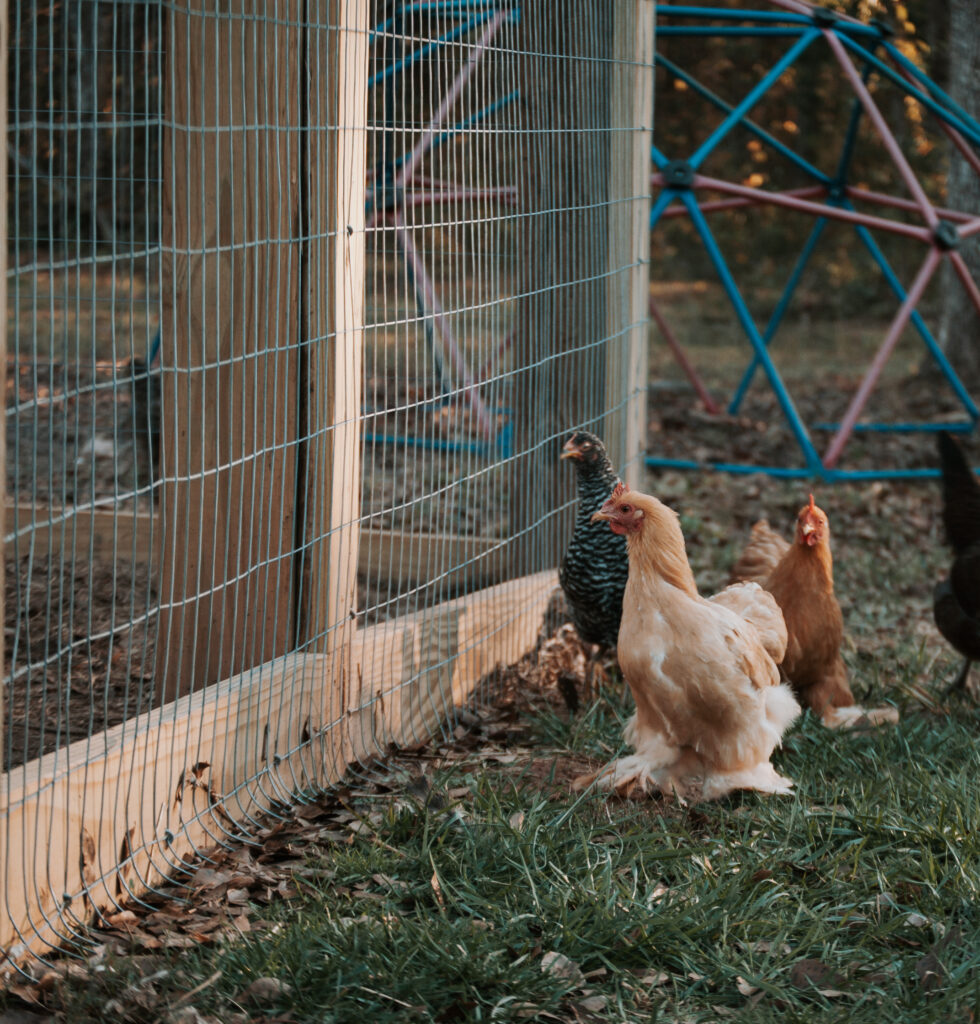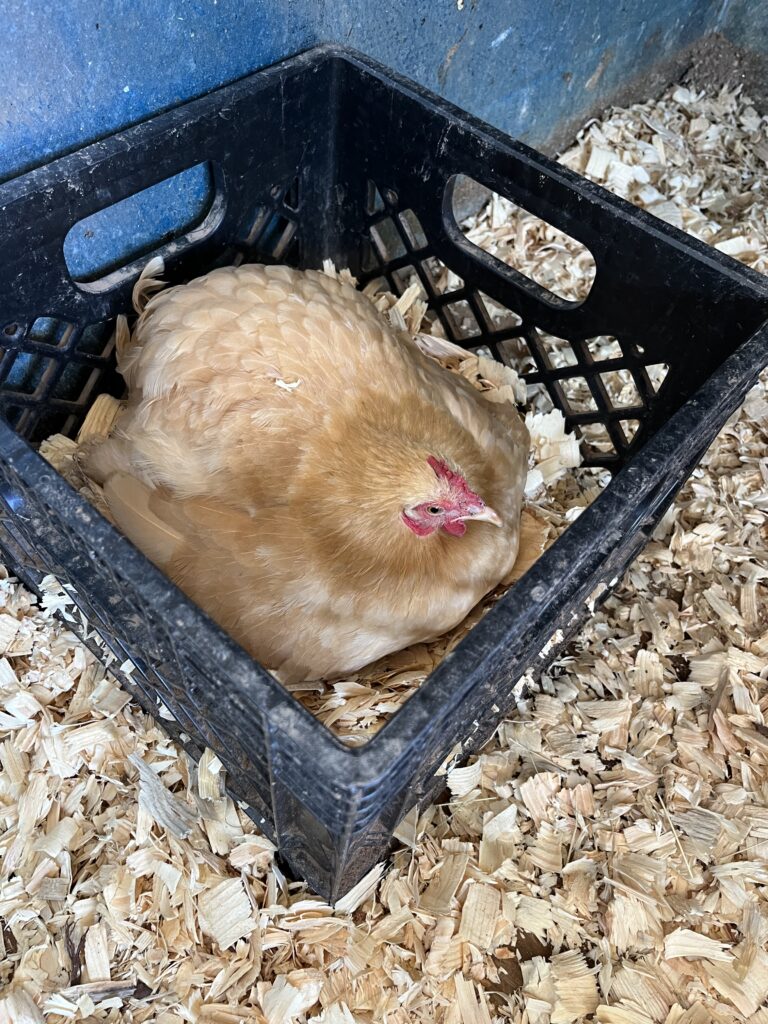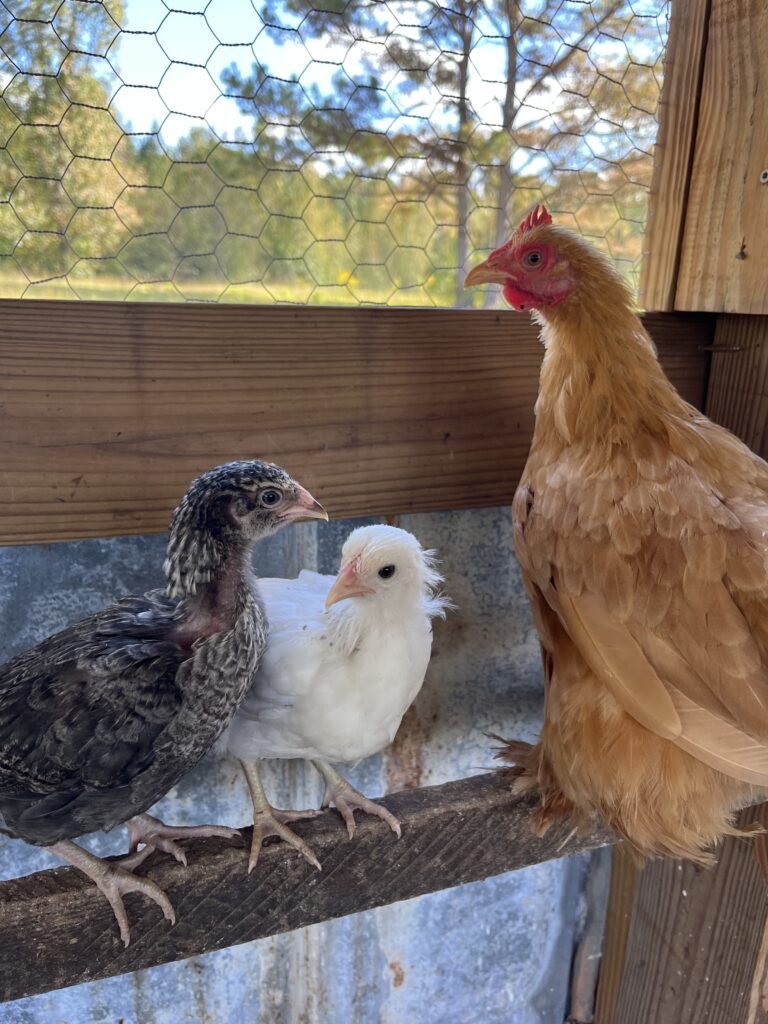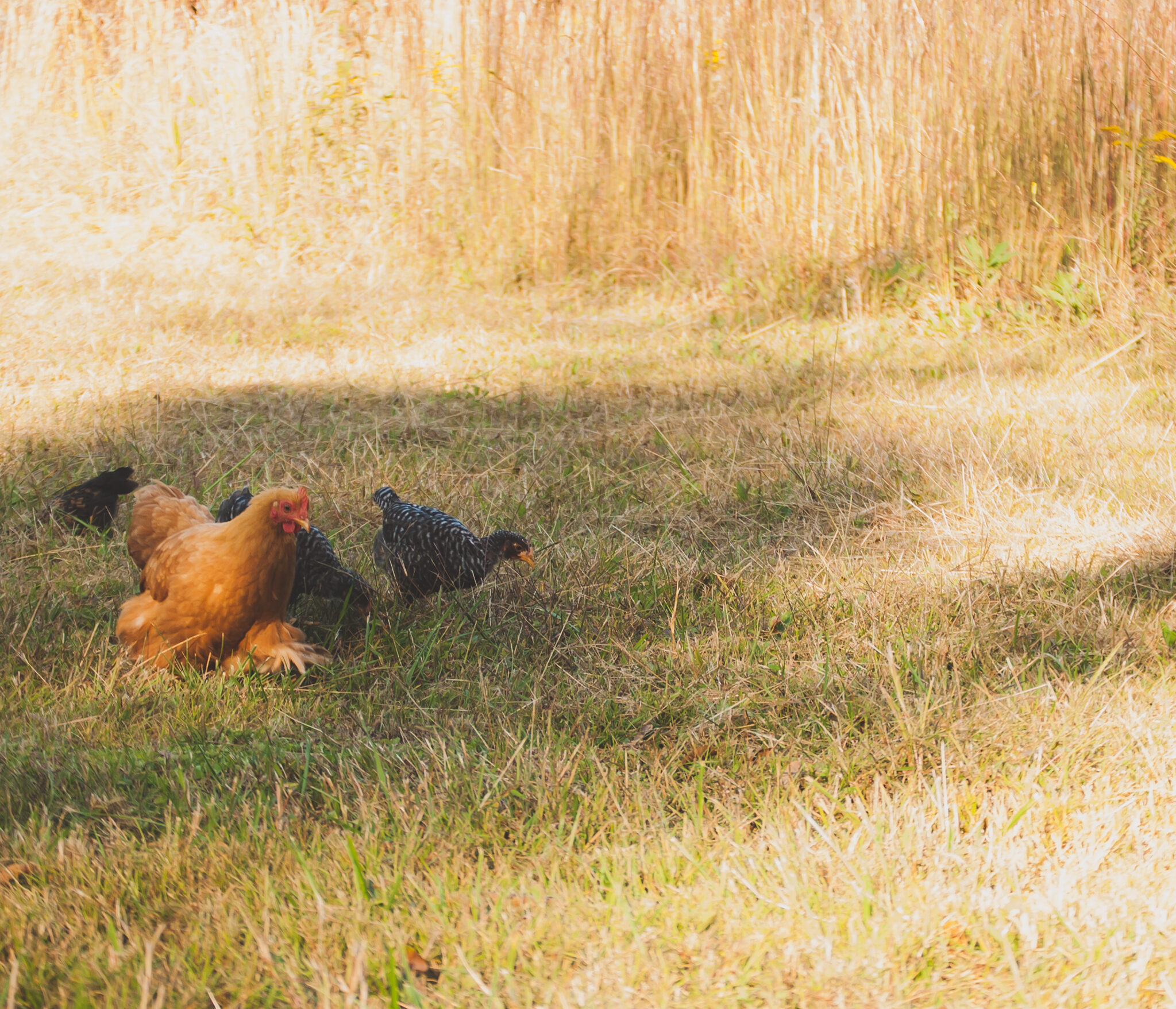How to care for a broody hen. A broody hen can be a huge blessing to your home flock. She takes care of incubating the eggs, and brooding the chicks, with very little help from you. However, she still needs your support to ensure she stays healthy and happy.

A Broody Hen
Having a broody hen can benefit your home flock in many different ways. It’s important to know how to care for a broody hen if you want her to be successful.
The mother hen does all of the hard work for you. She’ll incubate the eggs at the perfect temperature and humidity. After hatching, she’ll keep the chicks warm and safe. She’ll also teach the chicks all they need to know about being a chicken.
Having a broody hen around also means you’ll have a sustainable flock. If you have a rooster, chances are your eggs are fertilized. A good mother hen will help to ensure you have many generations of chickens in the future. You can read more about why you’ll love a broody hen HERE.
What is a Broody Hen?
A broody hen is one that has decided to sit and hatch eggs. Her decision is based on her hormones and the amount of sunlight. Often, a hen will be broody in the spring. Some hens may even go broody several times a year.
Once this switch is flipped inside her, she will continue to set until she hatches chicks, or you break her of being broody. Once you learn how to care for a broody hen, you may never want to break her again.
How Will I Know If My Hen Is Broody?
There are several ways to determine if your hen is broody. The primary way is she will sit on eggs for a long period of time. The sitting will continue day and night.
If I believe my hen is broody, I will check on her at night. If she is still sitting on the eggs, I know she is definitely broody. The hen won’t get off the eggs very often. Only to eat and drink occasionally. She will also have a large odorous poop.
How To Care For a Broody Hen
A broody hen will do most of the work of hatching chicks on her own. However, there are things you can do to ensure your hen stays healthy during this time.
Ensure the Hen Has Access to Food and Water
This seems obvious, but a hen can sit on eggs in some pretty obscure locations. Wherever your hen decides to sit, make sure that she has access to food and water. She will not get off the nest very often, and will not go far to find food. It’s very important that the food is nearby and clean. She will also need food higher in protein since she isn’t eating as much. Layer feed is generally high in calcium. She won’t need the extra calcium since she isn’t laying.
Chick starter is higher in protein, and will help your hen during her broody season. She can continue to eat the chick starter for up to six weeks after the chicks hatch. It is also safe for the chicks once they hatch.
Once she starts laying again, she will need layer pellets. New chicks should not eat high calcium layer feed. It can cause health problems later on.
Move the Hen to a Safe Location while setting
Broody hens like to be left alone. If another hen approaches her nest, she’ll puff up, growl, and run the hen off. However, there can be bully-hens that run her off her nest. Another hen may also get into the nest with her and lay more eggs. Even worse, the hen may damage the developing embryo.
To avoid any of this, you can move your broody to a quiet location. Not only will this help to relieve her anxiety, it will also encourage her to continue to hatch the chicks.
If your hen isn’t too keen on being moved, try moving her at night when she can’t see her surroundings as well. Make sure to move her to a safe location. A dog kennel in your garage or laundry room would work great.

Keep the Hen and Chicks Separated for a While
After the chicks have hatched, you can continue to leave them separated from the flock for a few weeks. If you have a small coop, that works great for the new mom and her babies. Separating the family from the flock will relieve a lot of the hen’s anxiety, and also ensure the safety of the chicks.
Around weeks four or five the hen may start to distance herself from the chicks and return to laying. However some hen’s stay with the chicks for an extended amount of time. My hen, May, stayed with her chicks for around eight weeks. I did not keep them separated from the flock for that long, but she continued to protect them.
Reintegrating a separated hen back into the can be difficult. The flock will not recognize the hen or the chicks and the pecking order starts over. This is a very delicate process and requires a lot of supervision on your part.
Leaving the Hen with The Flock
If you don’t have a way to separate the broody hen from the flock, leaving her with the flock is also an option. You can try to move her to a laying box that is more private within the coop. It will be harder to give her the isolation that she needs, but it isn’t impossible.
I’ve used dog kennels and portable fencing to block off the area around the nesting box. This helps to deter and nosey or bossy hens. Make sure that the nesting box your hen is sitting in isn’t over ten inches off the ground for the safety of the newly hatched chicks. Also, mark the eggs your broody is on with a marker. This will ensure you recognize any new eggs laid by another hen.
Leaving the hen with the flock does make for easier integration of the chicks. The rest of the group can see the hen throughout her broody time, so her place in the pecking order remains. While there is some danger from other chickens in the flock, the hen will know how to protect her chicks. It’s a natural behavior.

Having a Hen Hatch Hatching-Eggs
If you don’t have a rooster in your flock to fertilize the eggs, you can buy fertilized hatching-eggs for your hen to hatch. These can be ordered online, or purchased from your local chicken keeper. You can swap the eggs from underneath the hen during the night.
I’ve never had a problem with swapping eggs under a hen, but some may get upset and leave the nest. Try putting the egg in the nest in near the hen. Often time she will work the egg underneath her with the others she is on.
A Hen that Quits
Sometimes a hen will quit sitting on the eggs prior to the eggs hatching. Unfortunately this usually doesn’t end well for the embryos.
If you have an incubator, you can place the eggs in there until they hatch. It’s usually wise to have one on standby if your hen is on expensive hatching-eggs.
Isolating the hen will also help with this problem. She will be less distracted and more likely to remain on the nest. Prior broody behavior is also a good indication on whether or not a hen will remain on the nest to hatch the chicks.
Problems After Hatching
After hatching, some hens become homicidal. They will attack and kill the chicks. Unfortunately there’s nothing you can do about this behavior.
Having a brooder ready to go is a good idea around hatching time. This way, you can quickly remove the chicks to a safe location. Again, you can judge the hen’s past behaviors to determine if she will be homicidal. If she attempted to kill the chicks in the past, she will do it for future broods too.
If this is the first time a hen has hatched chicks, it’s best to keep a close eye on her behavior after hatching to determine if she will be a good mom or not.

Final Thoughts On How To Care For A Broody Hen
Learning How to care for a broody hen is beneficial to the hen, her chicks, and sustaining your homestead. Providing her with clean food and water, as well as privacy while sitting will help her stay healthy and be successful.
Learn More About Chickens
DIY Chicken Coop
Chicken Tractors
If you enjoyed this post, please share it! Thanks for visiting my farm.
[…] a great choice for both beginners and experienced chicken keepers. If you want to learn more about broody chickens, be sure to check out my previous post on the […]